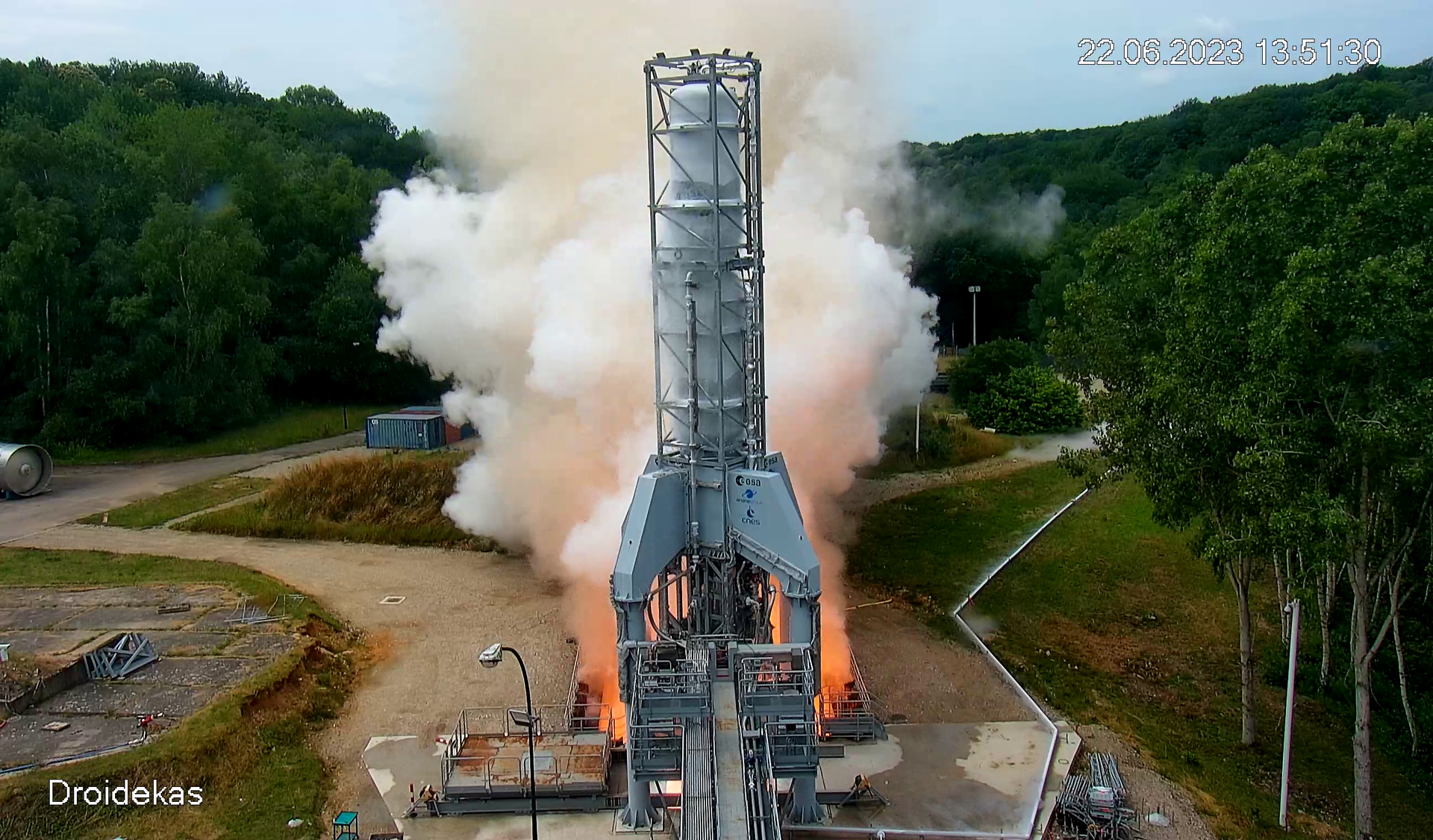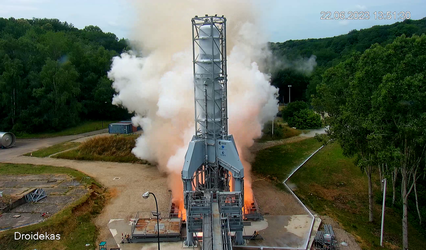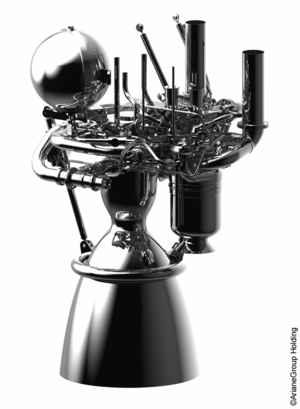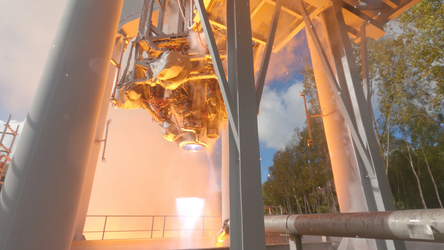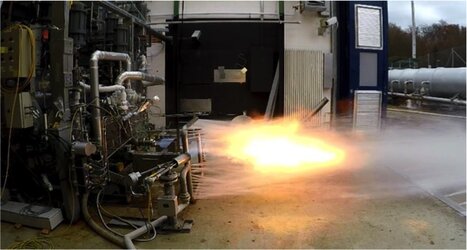Prometheus
Prometheus is a low-cost reusable rocket engine, the first model is being used on Themis, a reusable rocket prototype. Both Prometheus and Themis are funded by the Future Launcher Preparatory Programme (FLPP) of the European Space Agency (ESA). The Prometheus reusable rocket engine is also compatible with reusable launcher stages and could be suitable for different rockets.
Varying thrust

Prometheus is controlled by an autonomous electronic regulation system, which enables large ranges of thrust – from as low as 30% and up to 110% – and adjusting the fuel/oxidiser ratio as needed. This is an upgrade compared to the current Ariane 6 rocket main engine, Vulcain 2.1, improving control and flight adjustments.
Prometheus started its hot-firing tests in 2022 at ArianeGroup’s site in Vernon, France, demonstrating its ability to vary thrust. Reusable rockets vary thrust throughout their flight and reduce thrust to prepare for landing on Earth.
Propelling Prometheus
Prometheus uses liquid oxygen-liquid methane propellants. Compared to other fuels such as hydrogen and kerosene, methane has advantages. As it does not need to be as cold as liquid hydrogen, it allows operations without expensive helium and easier leak tightness solutions. It reaches higher performance than kerosene and avoids issues linked to soot in reusable engines.
Building Prometheus
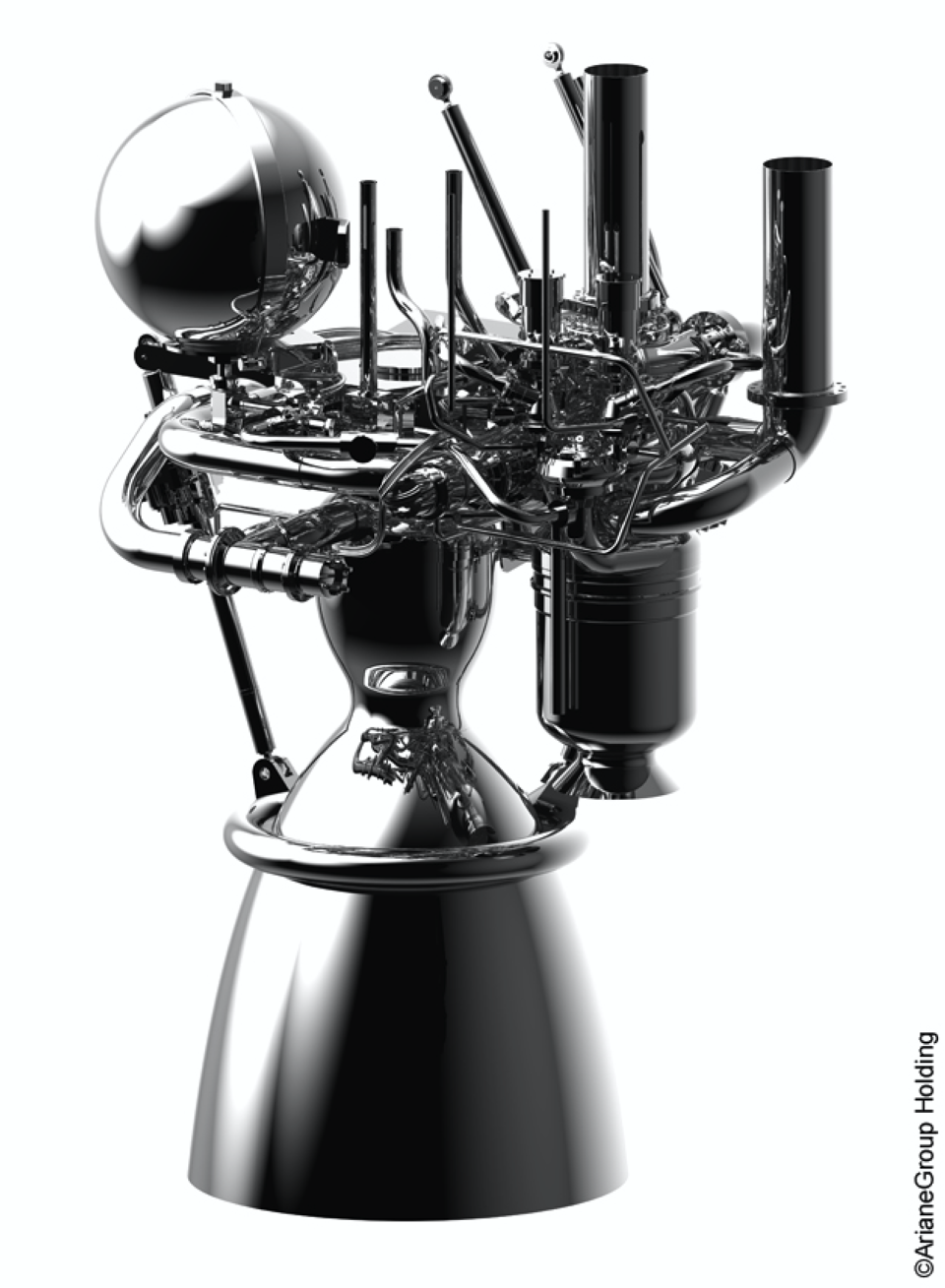
Prometheus is designed to be quicker to produce and ten times less expensive to build than the previous generation of 1200 kN engines. This is due to its design and the use of additive manufacturing techniques that ’print’ objects from metal powders, using techniques such as selective laser melting, cold gas spray and direct energy deposition. To demonstrate the quicker production, four Prometheus engines will be manufactured in a row.
Hydrogen variant
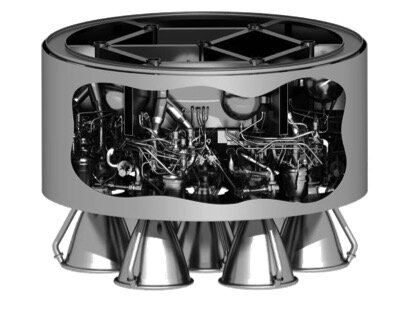
A variant with hydrogen as fuel is also designed up to engine system concept level. The combustion chamber and hydrogen turbopump are the special object of detailed design, manufacturing and testing on a Vulcain 2.1 workhorse engine, to be hot-fire tested in the frame of the Enlighten-ED project of the European Commission.
These two major engine subsystems, as well as other technologies of Prometheus, may be used by ArianeGroup to reduce the costs of the Vulcain 2.1 engine
Future Launchers Preparatory Programme
Prometheus is part of ESA’s Future Launchers Preparatory Programme demonstrating future space transportation systems and proving new technologies to meet Europe’s needs, putting Europe at the forefront of achievements in space. It fosters the transformation of space transportation industry in Europe on its way to a more reusable and sustainable use of space.
The design and production of Prometheus is supported by several ESA member states, including France, Germany, Sweden, Belgium, The Netherlands and Switzerland.
Technical details
| Main partners | ArianeGroup, GKN Aerospace, Safran Aero Boosters, APP. |
| Funding | ESA |
| Participating ESA Member States | France, Germany, Sweden, Belgium, The Netherlands, Switzerland. |
| Fuel | Liquid oxygen and methane. |

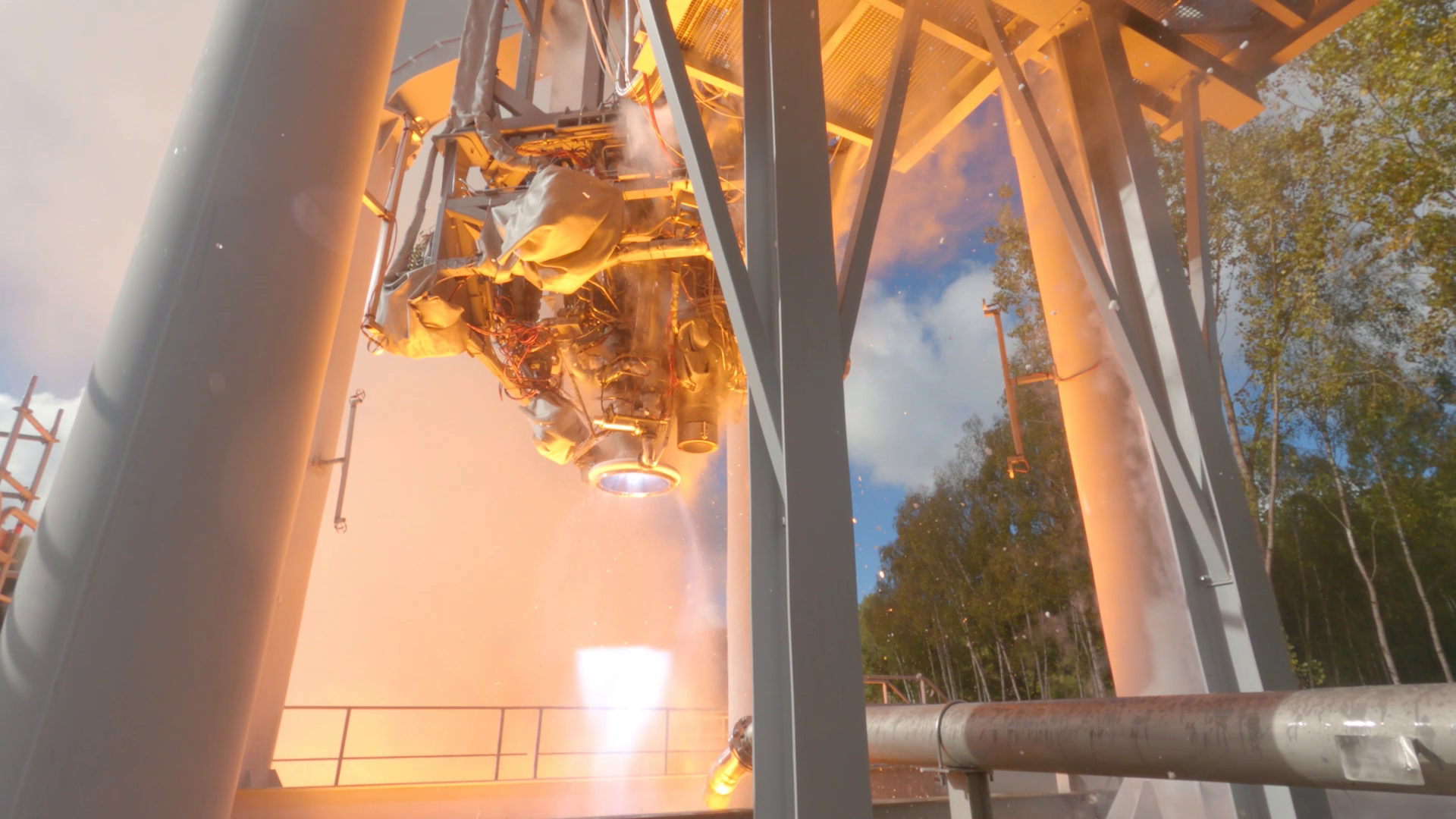
Access the video


